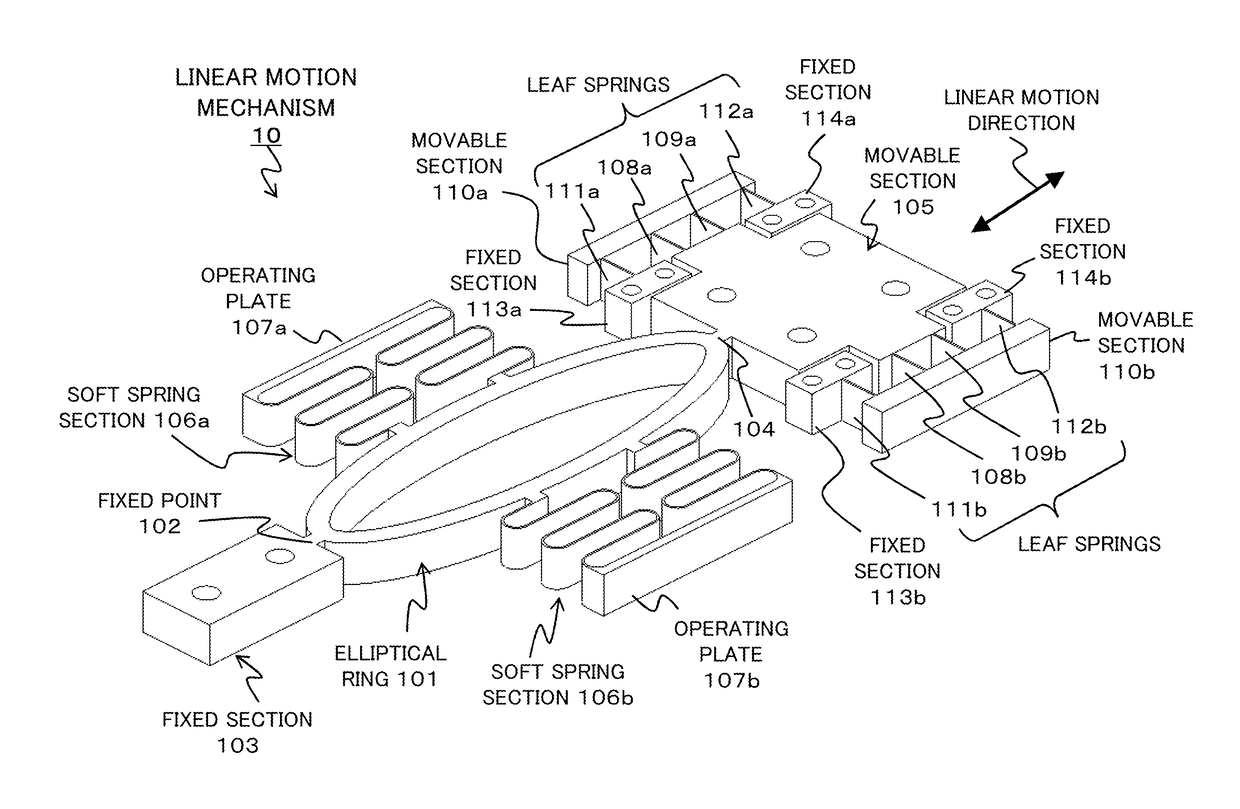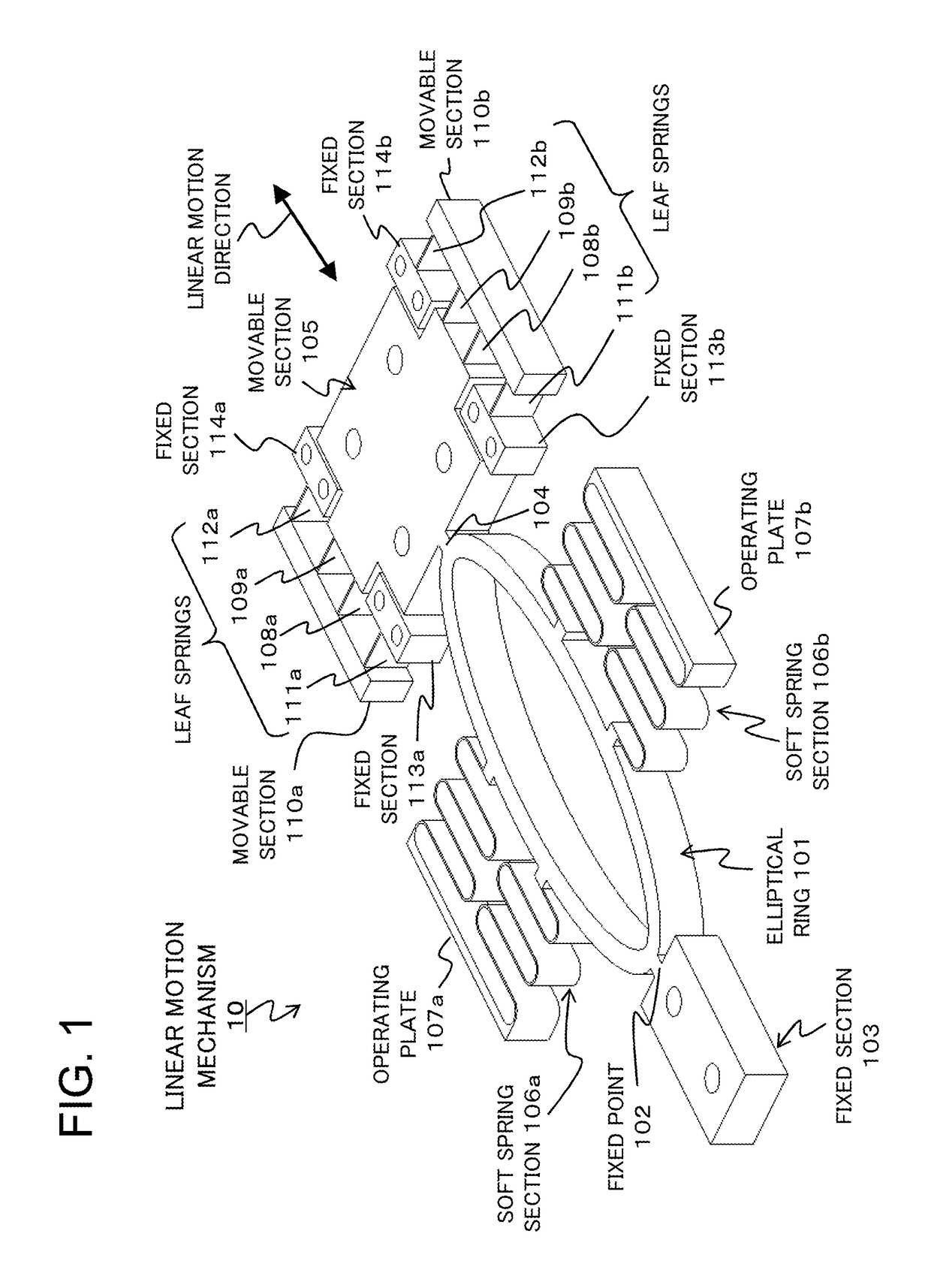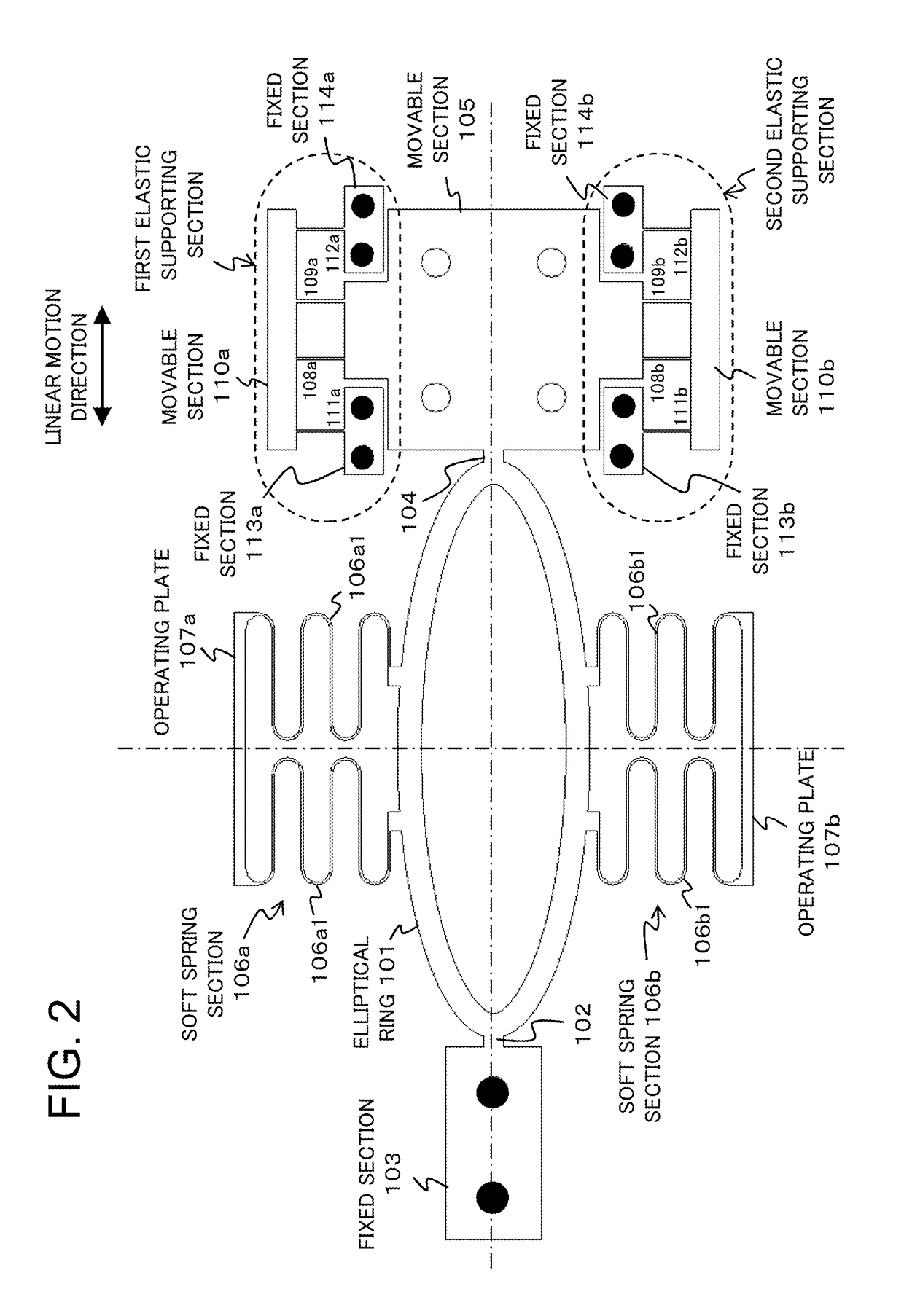Multi-degree-of-freedom adjustment mechanism
a technology of freedom adjustment and degree of freedom, applied in the direction of manipulators, micromanipulators, program-controlled manipulators, etc., can solve the problems of critical system defects, complex assembly process and adjustment operations, and electrical and mechanical parts that require a plurality of electrical and mechanical parts, and achieve easy reduction in weight and size, high precision, and structural robustness
- Summary
- Abstract
- Description
- Claims
- Application Information
AI Technical Summary
Benefits of technology
Problems solved by technology
Method used
Image
Examples
first exemplary embodiment
3. First Exemplary Embodiment
3.1) Structure
[0063]Referring to FIG. 8, a support assembly as a multi-degree-of-freedom adjustment mechanism according to a first exemplary embodiment of the present invention is composed of a bipod 600 and the linear motion mechanism 20 as described above. The bipod 600 has two support rods 601 and 602, one ends of which are connected at a top provided with a support section 603 to form an upside-down V-shaped bipod. The other ends of the support rods 601 and 602 are fixed to the movable section 305 of the first linear motion section 300 and the movable section 405 of the second linear motion section 400, respectively. The support rods 601 and 602 have the same structure. Hereinafter, the structure of the support rod 601 shown in FIGS. 9-11 will be described as an example.
3.2) Bipod
[0064]Referring to FIGS. 9-11, the support rod 601 is shaped like a leg including a fixed portion 610, two limited-displacement flexible joints 611 and 612, a relatively rig...
second exemplary embodiment
4. Second Exemplary Embodiment
4.1) Structure
[0074]Referring to FIGS. 17-21, a hexapod arrangement having six degrees of freedom includes a base plate 701, a top plate 702 and three support assemblies A, B and C, each of which is composed of the bipod (600A, 600B, 600C) and the linear motion mechanism (20A, 20B and 20C) as shown in FIG. 8. The support assemblies A, B and C are fixed and arranged on the base plate 701 with regular-triangular configuration as typically shown in FIG. 20. The top plate 702 is fixed to the support sections of the bipods 600A, 600B and 600C. Accordingly, the top plate 702 is supported by three position-adjustable points.
[0075]As an example, the base plate 701 is circular and the top plate 702 is star-shaped. The top plate 702 may be formed of three legs 702A, 702B and 702C joined at a center point with the angle between any two adjacent legs being 120 degrees. The three legs 702A, 702B and 702C are supported respectively by the support assemblies A, B and ...
PUM
 Login to View More
Login to View More Abstract
Description
Claims
Application Information
 Login to View More
Login to View More - R&D
- Intellectual Property
- Life Sciences
- Materials
- Tech Scout
- Unparalleled Data Quality
- Higher Quality Content
- 60% Fewer Hallucinations
Browse by: Latest US Patents, China's latest patents, Technical Efficacy Thesaurus, Application Domain, Technology Topic, Popular Technical Reports.
© 2025 PatSnap. All rights reserved.Legal|Privacy policy|Modern Slavery Act Transparency Statement|Sitemap|About US| Contact US: help@patsnap.com



